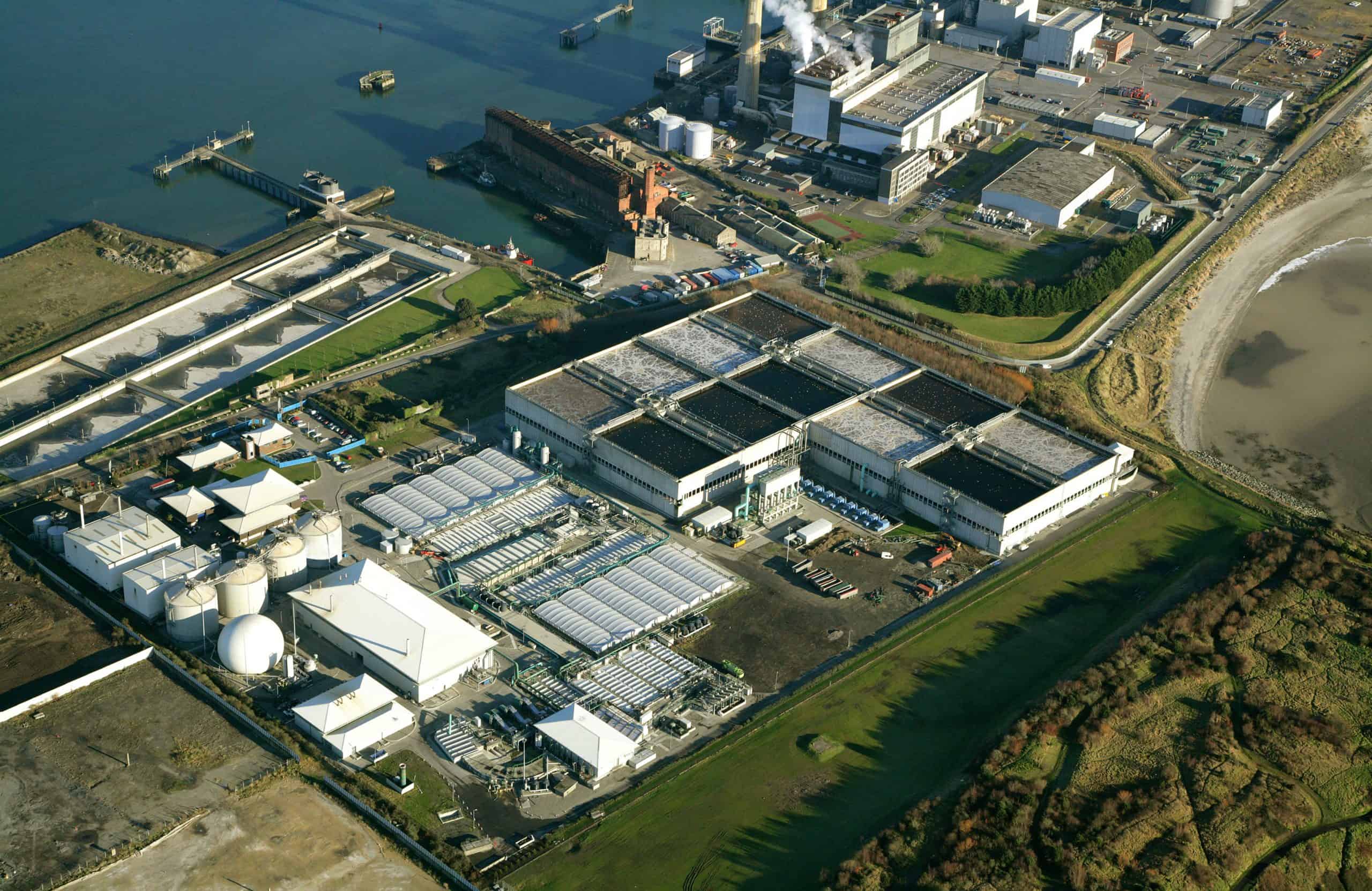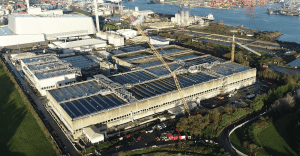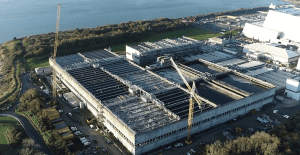FaCT3 Complete Major Ringsend Upgrade
In partnership with Uisce Éireann (Irish Water), FaCT3 consisting of TES, Farrans Construction and Celtic Anglian Water (CAW) have completed the Design and Build phase of the SBR Retrofit Block 2 Contract at the Ringsend Wastewater Treatment Plant Upgrade in County Dublin, which is the largest wastewater treatment plant in Ireland and one of the largest in Europe. Currently the plant treats approximately 40% of Irelands wastewater.
The purpose of this Contract was to increase the secondary treatment capacity and treatment standard at the WwTP as part of the overall Ringsend Wastewater Treatment Plant Upgrade Works which involved expanding the treatment capacity of the plant from 1.64m PE to 2.4m PE and upgrading the treatment processes to achieve full compliance with the 2010 Urban Wastewater Treatment Directive.
Coming together as a consortium, TES, Farrans Construction and Celtic Anglian Water (CAW) took on the title of FaCT3 Team.
The Contract consisted of retrofitting four (4) of the existing Sequential Batch Reactors (SBR) cells in the upper of two levels to enable a portion of the settled wastewater arising at the Ringsend plant to be treated to a secondary standard using a Aerobic Granular Sludge (AGS) – Nereda® process technology.
The CAW Element of the consortium were responsible for the enabling works to facilitate construction, this required innovative isolations and workarounds to ensure minimum disruption to the existing plant.
In close coordination with the site operations teams, CAW completed one of the largest over-pumping exercises in Ireland, at the Ringsend Wastewater Treatment plant, to bypass the pumping station to construct an upgrade that would allow future isolations without impacting plant operations.
Following months of planning, a massive 150,000m³ of water was diverted at a rate of 2m³ per second over just two days – allowing processing to continue and works to be carried out without disruption. A typical shut-down for works is less than 4 hours due to limited capacity in storm tanks. This exercise provided an extended working window of over 12 hours per day to carry out their upgrade work and prevented discharge of primary screened effluent into the Liffey.
After the design and build element, Celtic Anglian Water will assume operation of the newly upgraded process for a period of 6 months to finish out the operate phase of the contract.
Farrans Construction was involved with the Civil works element of this project, which included the demolition of existing structures within the SBR cells and the construction of new inlet chambers, buffer tanks and pump plinths to facilitate new pumps installed in the ILPS by TES. Farrans also supplied all the site accommodation for the project team and the Employers Representative along with two tower cranes that serviced the upgrades on Block 2.
Joe Cunningham, Project Manager at Farrans Construction also comments on his experience with this project, “This was a challenging but rewarding project that involved working within a live wastewater works site, working from height, working in confined spaces and alongside other Contractors/Existing Operator in a collaborative way to ensure that it was a success.”
TES were responsible for the completion of all Mechanical, Electrical, Instrumentation, Control, and Automation (MEICA) works within this project from design and procurement through to installation and commissioning.
The MEICA works dealt with complex instrumentation as well as an array of large pumps, valves, pipework and specialist equipment which was safely and effectively installed and commissioned by the TES team which ensures the new process operates as intended.
Martin Sherry FaCT3 Consortium Site Manager comments on his involvement with this project,
“Having been involved with this project from the beginning it is fantastic to see how far it has come! There have been many challenges encountered during the project which in turn have produced some ingenious feats of engineering to ensure a successful installation of the process. Treatment capacity and effluent quality will benefit greatly from the work that has been done at the Ringsend site!”



